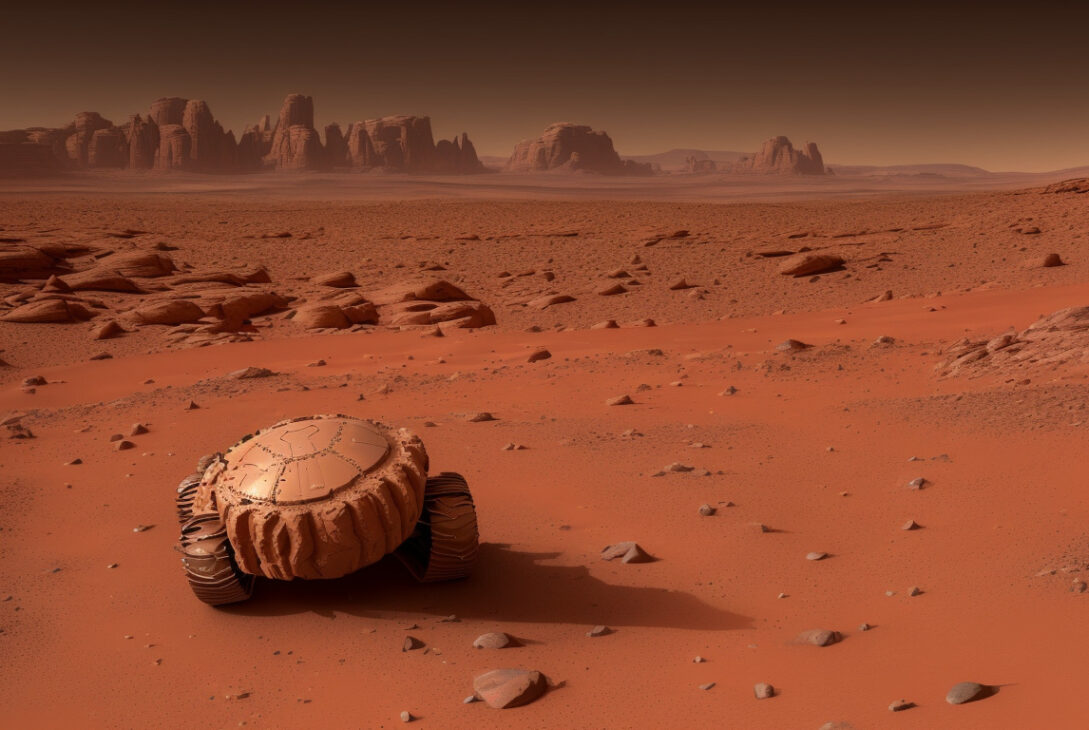Tumbleweed Rover Tests Showcase Breakthrough in Low-Cost Mars Exploration Technology
September 25, 2025 — Recent testing of the innovative Tumbleweed rover technology marks a major advance toward affordable, large-scale exploration of Mars. The findings, revealed at the 2025 Joint Meeting of the Europlanet Science Congress and the Division for Planetary Sciences (EPSC-DPS) in Helsinki, demonstrate that wind-powered spherical rovers can effectively traverse varied Martian terrains while autonomously gathering scientific data.
Harnessing Mars Winds for Mobility
The Tumbleweed rovers are lightweight, spherical robots about five meters in diameter designed to be propelled by the Martian winds much like terrestrial tumbleweeds. The concept involves deploying swarms of these rovers to disperse widely across the Martian surface, enabling simultaneous environmental sampling from multiple locations—a capability that could transform understanding of Mars’ atmospheric and geological processes.
The rovers’ final mission phase envisions them collapsing into stationary instruments, creating a network of measurement stations that would provide long-term scientific monitoring and serve as potential support infrastructure for future missions.
Validating Design with Wind Tunnel and Field Tests
Team Tumbleweed, an international collective of young scientists based in Vienna and Delft, carried out rigorous experimental campaigns earlier this year. In July 2025, at Aarhus University’s Planetary Environment Facility in Denmark, they tested scaled prototypes measuring 30 to 50 centimeters in diameter inside a sophisticated wind tunnel designed to simulate Martian atmospheric conditions. The experiments were conducted under low pressure (17 millibars) and encompassed a range of wind speeds and surface textures.
Results showed that wind speeds as low as 9–10 meters per second were enough to set the rovers rolling across Mars-analog terrain including sand, pebbles, and rock fields. The prototypes successfully climbed inclination slopes equivalent to roughly 30 degrees on Mars, indicating their ability to handle difficult landscape features.
In April 2025, a full-scale 2.7-meter diameter Tumbleweed Science Testbed rover was tested in a natural quarry in Maastricht, the Netherlands. Equipped with cameras, magnetometers, inertial measurement units, and GPS, the rover demonstrated its ability to collect and transmit environmental data in real time while tumbling over uneven surfaces.
Insights Into Martian Winds and Rover Range
Martian winds near the surface have been historically understudied, with available data indicating average speeds in the single digits. However, NASA’s InSight lander and the Ingenuity helicopter have recorded frequent gusts exceeding 10 meters per second. Team Tumbleweed’s findings align with this data and support the potential for rovers to be mobilized by daily wind cycles.
According to Mission Scientist Mário João Carvalho de Pinta Balsemão, modeling predicts that an average Tumbleweed rover could cover approximately 422 kilometers over 100 Martian sols (Martian days) at an average speed of 0.36 kilometers per hour. Under optimal wind conditions, the range might extend to 2,800 kilometers, enabling vast surface coverage with a minimal energy footprint.
Next Steps Toward Mars Deployment
Building on these encouraging results, Team Tumbleweed plans to enhance their rover payloads with advanced scientific instruments including radiation detectors, soil probes, and dust sensors. Refinements to the rover navigation and dynamics models are underway to improve performance predictions.
In November 2025, further field trials are scheduled in the Atacama Desert of Chile, an environment with Mars-like conditions. These tests will include multiple rover units working as a coordinated swarm using instruments provided by external research partners.
A Vision for Future Mars Missions
This innovative approach could revolutionize Mars exploration by drastically reducing costs and expanding spatial coverage. Instead of a few stationary rovers or landers, swarms of autonomous, wind-driven Tumbleweed rovers could provide a rich, simultaneous dataset on atmospheric phenomena, surface composition, and climate processes.
James Kingsnorth, Head of Science at Team Tumbleweed, emphasized the significance of these developments: “We now have experimental validation that Tumbleweed rovers could indeed operate and collect scientific data on Mars. This represents a turning point and opens exciting possibilities for affordable planetary exploration.”
As the project moves forward, Tumbleweed rovers may become an essential part of mankind’s quest to understand Mars, ultimately supporting human presence and further robotic missions on the Red Planet.
More Information:
- Kingsnorth, J. et al., Preliminary Feasibility Assessment of the Tumbleweed Rover Platform and Mission using the AU Planetary Environment Facility, EPSC Abstracts (2025). DOI: 10.5194/epsc-dps2025-1775
- Europlanet Society: https://www.europlanet-society.org
Credit for images: Team Tumbleweed / Sas Schilten
Article edited by Gaby Clark, reviewed by Robert Egan
This article adheres to the editorial standards of Science X and has been fact-checked and proofread.










